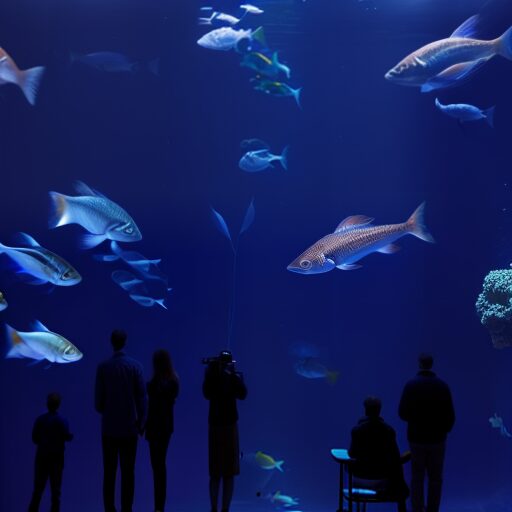If you are looking to visit California’s beautiful beaches this summer, be prepared to encounter some of the ocean’s greatest creatures. While the recent spike in shark activity in Pacific Grove could mean that your beach day might be better spent in shallower waters, it is also an opportunity to learn about the incredibly diverse ecosystem right on our coast!
This past week, Pacific Grove, a small beach town in Monterey Bay, has made waves with reports of increased shark activity. The local authorities urged residents to stay out of the waters after an unusual number of seal attacks in the summer months. In this area, sharks are typically a seasonal phenomenon, but, due to rising sea temperatures, are now being observed year-round. This has an important impact on the way we study and interact with these beautiful creatures. Monterey Bay is home to a number of shark species, including the Great White, Leopard, Broadnose Sevengill, and Soupfin sharks. These sharks have a large role in the marine ecosystem of the region, acting as apex predators by controlling prey populations, supporting kelp forests, and promoting biodiversity.
If you are excited to observe these animals in their natural habitat, there are many safe ways to do so in the Bay Area and Monterey Bay:
1. Monterey Bay Aquarium: Globally recognized as one of the most extensive aquariums, the Monterey Bay Aquarium is a must-visit destination for anyone interested in marine life. Though they house countless species ranging from sea otters to jellyfish, their open sea exhibit features a huge tank that is home to hammerhead sharks and local fish species, allowing you to view wildlife up close without any danger. Find out more and visit here.
2. Elkhorn Slough National Estuarine Research Reserve: Located in Moss Landing, this research reserve is one of California’s largest wetlands and an important ecosystem for local bird, fish, and, on occasion, shark species. Take a guided kayak tour to spot local sea otters, egrets, pelicans, and herons while learning about the area’s wildlife ecosystems. Find out more here.
3. Farallon Islands: Located 30 miles West of San Francisco, these islands, nicknamed the “Galapagos of the North”, are a hotspot for Great White Sharks. A boat tour to these islands is a great opportunity to view these predators in their natural habitat, from a safe distance. You might also be able to spot other marine animals, like sea lions and seabirds, depending on the season. Find out more and book a tour here.
While exploring Monterey Bay, and any other Northern California and Bay Area beaches, be sure to stay aware of your surroundings and follow local authorities when swimming. Human injuries are very rare but it is still important to keep general safety precautions, including never swimming alone and avoiding dawn and dusk. We hope you enjoy this historic moment in local marine life!
More Helpful Articles
The Bay Area’s Mystery Walls
For more than a century, Bay Area residents have been puzzled over the existence of stone walls scattered across the East Bay, beginning in San Jose and continuing north into the hills of Berkeley. These structures appear to have been built from hand, some in long...
Celebrating Easter in the Bay Area!
Happy Easter!! Whether you are celebrating the holiday or not, this time of year brings endless parties, egg hunts, brunches, and unforgettable Springtime experiences to the Bay Area. Whether you are excited to attend an Easter service at one of San Francisco’s most...
San Francisco’s Architecture
When walking its streets, it is hard not to appreciate the exciting and diverse architecture of San Francisco and the Bay Area. The architectural history of San Francisco has mirrored the city’s resilience, cultural vibrancy, and ever-evolving diversity. From adobe...






Recent Comments